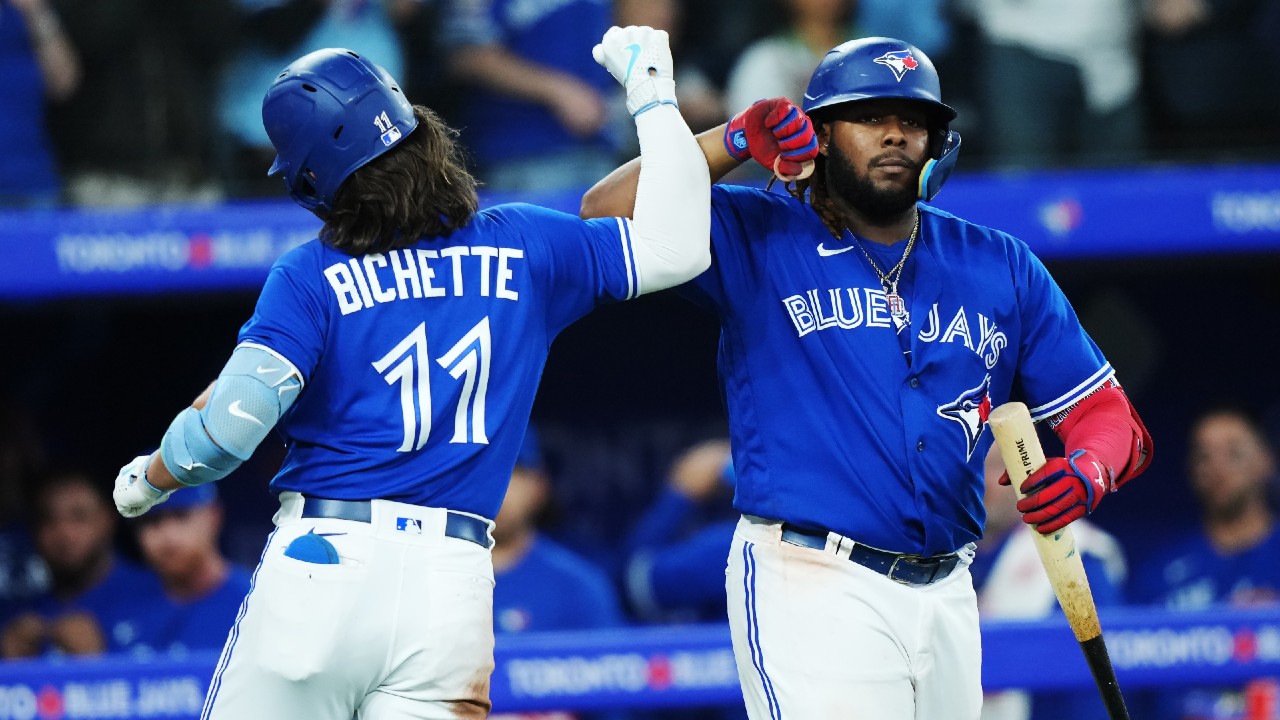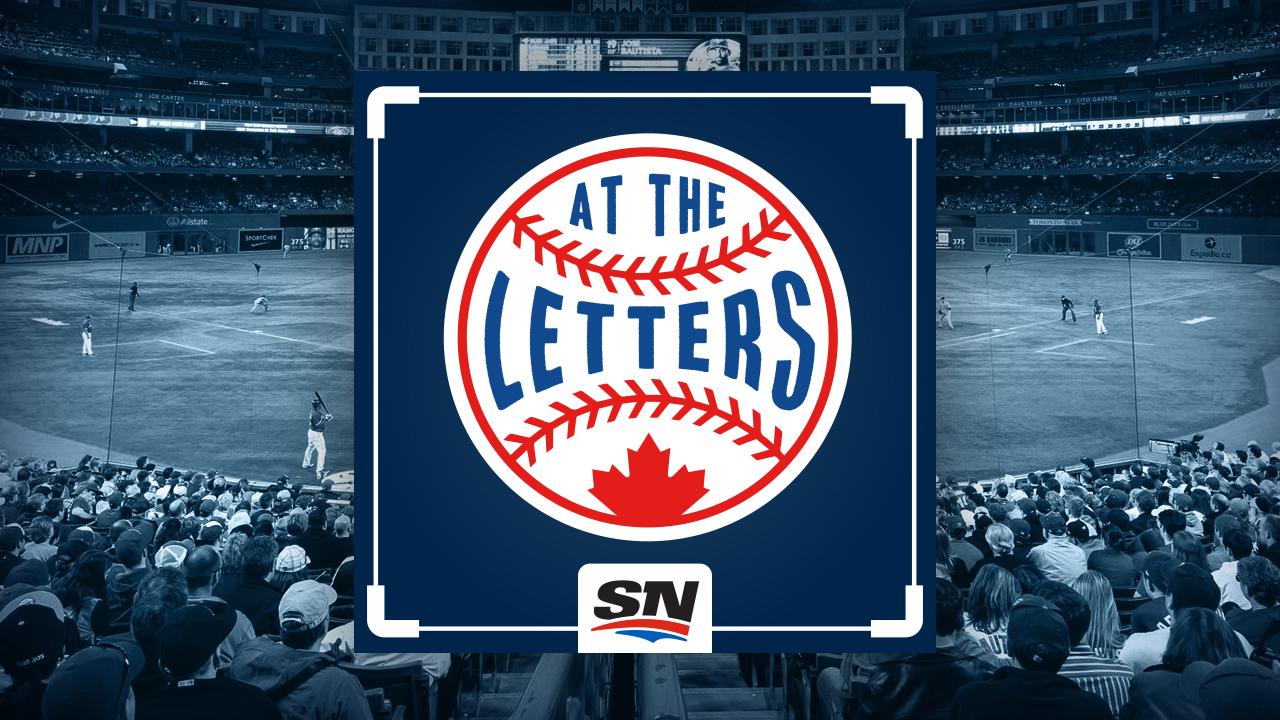Sports
Inside Alek Manoah’s emotional week from injury to surgery date – Sportsnet.ca

June 10, 2024, 10:54 AM
OAKLAND, Calif. – Alek Manoah braced himself for the worst possible outcome in his right elbow after he walked off the mound at Guaranteed Rate Field on May 29, experiencing a pinching sensation in the joint unlike anything he’d ever felt before.
The Toronto Blue Jays right-hander hoped, of course, that the issue might be just muscular. Nagging pain followed his previous outing against the Detroit Tigers, too, and he was able to loosen his arm after some warm-up exercises between starts, supporting that notion. So too did a quick check from a Chicago White Sox team doctor, who noted that there was no clicking in Manoah’s elbow, something that usually accompanies ligament damage.
Still, no full diagnosis could be made without an MRI so one was set for the following day. This kicked off a wild week of veering between optimism and pessimism for the 26-year-old right-hander, culminating with season-ending surgery being scheduled for June 17.
He’ll undergo the hybrid Tommy John procedure performed by Dr. Keith Meister that replaces the ulnar collateral ligament and anchors the new one with an internal brace suture and will be out well into next year.
“It just sucks because I worked my ass off to get back here, not to prove to anybody else, but to prove to myself, to prove to my teammates I’m still this (expletive) badass pitcher. And five starts into that this should happen, it was kind of a pain in the butt,” Manoah says by his locker on a quiet morning in the Oakland Coliseum’s visitors clubhouse. “It’s a down time where this could either make or break me. I’m not going to let this break me. I’m going to continue to let it make me.
“For me, it’s not a thought that I’m going to come back and not be good. I’m going to be better just because I have this time to really analyze, deep dive into my body, and continue to work on my nutrition, the mental part of the game. And I’m going to be coming back with a rehab-routine-regimen strengthened arm that I’ve never had before. So I feel really (expletive) that I’m not going to be performing, but at the same time, mentally, I need to take advantage of this time to come back even better.”
Here’s a look at the swings Manoah went through before arriving at that outlook:
May 30 – The first MRI
Back in Toronto on Thursday morning after that fateful start, Manoah went to get an MRI done in the morning and then headed to the Rogers Centre to get his usual workout in. Once finished, he sat in the sauna for 30 minutes and when the tightness in his elbow didn’t ease, he couldn’t stretch out his arm, he hit the hot tub for an hour. When that didn’t help either, “That’s where I was really worried.”
“Leading up to my start, my elbow was bothering me a little bit, but it felt more muscular. Once I warmed up it would move fine,” Manoah explains. “I remember going home and telling my wife, ‘I don’t need the results of the MRI, I kind of already know what’s going to happen. She was like, ‘Be optimistic. Just wait.’”
[brightcove videoID=6353901500112 playerID=JCdte3tMv height=360 width=640]
Later, as he and Marielena were driving to lunch, Andrew Pipkin, the club’s major league director of health and performance, phoned. The MRI showed his bone structure was good and the muscles in the area were fine structurally, although inflamed. A wave of optimism struck before Pipkin delivered a but and it was a big one – there was concern about damage to the ligament.
“(Expletive),” Manoah remembers thinking to himself. “Pulled over, was crying a little bit, pretty emotional. I knew damage to the ligament meant significant time.”
Follow-ups with the team doctors were set for Friday and the MRI images were forwarded to Meister.
May 31 – Official Diagnosis
The next day, Manoah visited with one of the Blue Jays’ team doctors, who ran him through a series of questions about what he was feeling in the elbow. The symptoms he described all matched up with what the MRI showed, and they went over the results together.
“He said there was a significant tear in the UCL,” recalls Manoah. “Meister was saying the same thing, but he said, ‘Let me see you in person.’”
So they set an appointment for the following Thursday, with manager John Schneider revealing news of the injury later that Friday before the Blue Jays opened a series against the Pittsburgh Pirates.
June 1-5 – Coming to Terms with Reality
Manoh spent the next few days trying to reconcile both what might lie ahead, and what had just happened. After the outing in Chicago, he talked about guarding his elbow a little bit through warmups and even a bit on the mound. On the fateful offering, he told himself not to guard it and let it go, which he did, reaching a full extension with his elbow and leaving himself with that pinching pain.
“My parents know I play through anything, my wife, she sees some of the things I come home complaining about, and then I go out there and shove and she’s like, I don’t even know how you’re doing it,” says Manoah. “There are a lot of things guys in the clubhouse just go through. It’s a long season. It’s a tough sport. We play a game where our arms are not supposed to throw overhand at those velocities. (Expletive)’s going to hurt. So, for me to come out of the game, I’d never felt anything like that before. I just couldn’t.”
On Wednesday, Manoah left the Blue Jays and flew to Texas for his visit with Meister, on pins and needles over what the exam might bring.
June 6 – Surgery is Set
Manoah arrived at Meister’s office the next day and the first thing he did there was undergo another MRI, this time with a stress test. Staff had him lie on his side, propped up the elbow and then put a weight on it, creating a clearer look at what was happening in the joint.
“Disgusting feeling, very uncomfortable,” says Manoah, “but it’s kind of like a rope, if you hold it together, it’s kind of hard to tell really what’s going on. If you stretch the rope, you can see how deep the tear goes.”
His tear ran deep, in excess of three millimetres, making it a Grade 3 sprain. Meister ran through all the different degrees, showed him what a healthy ligament should look like and then showed Manoah his, which had essentially folded in on itself.
“I was like, ‘Oh, that’s not good,’” Manoah remembers, and Meister launched into the different operation options, running through the history of the Tommy John procedure, explaining his hybrid surgery. “At the end, he’s like, ‘Do you have any questions?’ And I was like, ‘So I guess I’m getting surgery?’”
Up to that point, surgery hadn’t really been discussed and right then, the reality of his injury really sunk in.
“I asked him, ‘This isn’t something you can rehab?” says Manoah. “He’s like, ‘Maybe if it was a Grade 1. Ninety-nine per cent of guys with a Grade 2 get the surgery. You’re a Grade 3. With where you’re at in your career, you’re young, if you were 39 and it was October, maybe we could bandage you up and try to figure it out. But for you, there’s only one option.’”
Meister explained the benefits of his hybrid procedure, which he’s performed some 400 times. He told Manoah about two outlier cases where it didn’t take due to extenuating circumstances. Originally, post-Tommy-John-surgery elbows lasted up to 15 years, he added, but now with velocity king and spin rates also rising, the life-span was down to 7-9 years. The replacement with brace extends that.
“I was like, ‘Well, if that’s the one that’s going to hold me up for the rest of my career, let’s do that one,’” says Manoah, and the date was set, leaving him to come to terms with the long road ahead.
“For me, it’s keeping my trust and faith and really understanding there were some really hard times when I was battling through my shoulder stuff last year, then going through that off-season, in the gym, rehabbing, doing everything that I can, then spring training, hit another speed bump, there were a lot of frustrating times through there,” he continues. “To be able to come back up here and be a spark, be good, I just use a lot of that experience and learning to stay true to who, being a good teammate. God showed me a light at the end of that tunnel, where the tunnel might have felt very far away. I know there’s going to be another light at the end of this tunnel. The best doctor in the game is going to be doing the surgery. I have the best training staff and the best support system. I know it’s going to be an up-and-down journey. But I trust that through every journey, there’s always that light at the end of the tunnel.”
June 7-9 – Rejoining the Blue Jays
Manoah intended to be in Toronto all season and he isn’t letting the upcoming surgery alter his plans, so he’ll do his rehab in the city while remaining with the team. For two weeks after the procedure, he’s been instructed to not sweat. After that he can begin light exercise and after three months, he can resume full-body workouts. Throwing begins at six months and if all goes well, he could be back sometime next summer.
In the interim, he’ll be with the Blue Jays for all their home games, “focused on being a really good teammate and focused on trying to find a way to help this team win, even without throwing a baseball.”
“No one likes a victim, you know?” he says. “I know there are going to be tons of ups and downs, but the way I’m trying to think about it and give perspective to it, instead of me having a four-month off-season, I’m having a year-long off-season. So what can I do in this year-long off-season? How much can I get ahead? And then once I start throwing), how much better can I get? I know it’s going to be tough and there are going to be some days where the team’s on the road and I’m in Toronto and why me? We’re not there yet and the plan is to never get too low.
“If I can help bring positivity in the dugout, if I can help by continuing to be a good teammate, I think that that motivates other guys. Not putting my head down, not putting my head in my locker, not feeling sorry for myself, not being a negative soul walking around. That brings people down. How is he going to handle this? Is he going to put his head down? Is he going to be sour? No, I’m not that kind of guy. I’m going to stay up. I’m going to stay positive. I know it’s a (expletive) situation but a lot of guys in this clubhouse have gone through it. It helps me, but at the same time, I think I can also help the team, whether that’s seeing something when a pitcher’s pitching or just bringing energy to the dugout, being in those pitcher meetings and being able to give advice on how to throw certain guys. There are so many aspects to being a Major League Baseball player. Obviously the most important one is performing well. I’m not able to do that right now. But all the other aspects, I can still do a really good job of that.”



)






